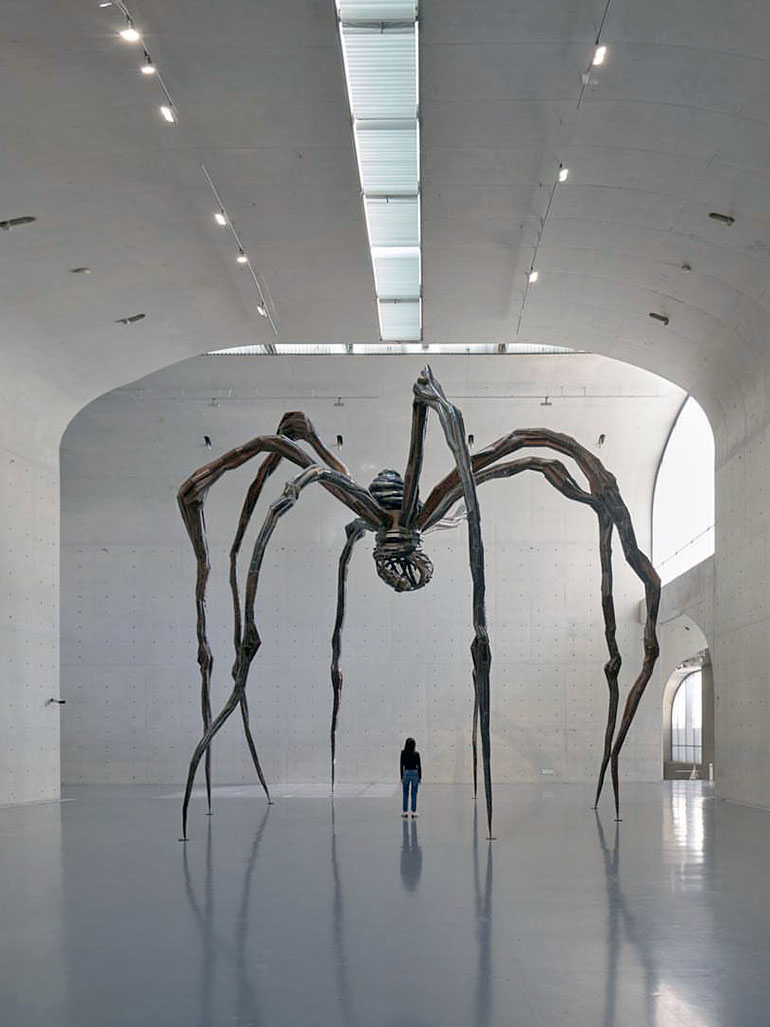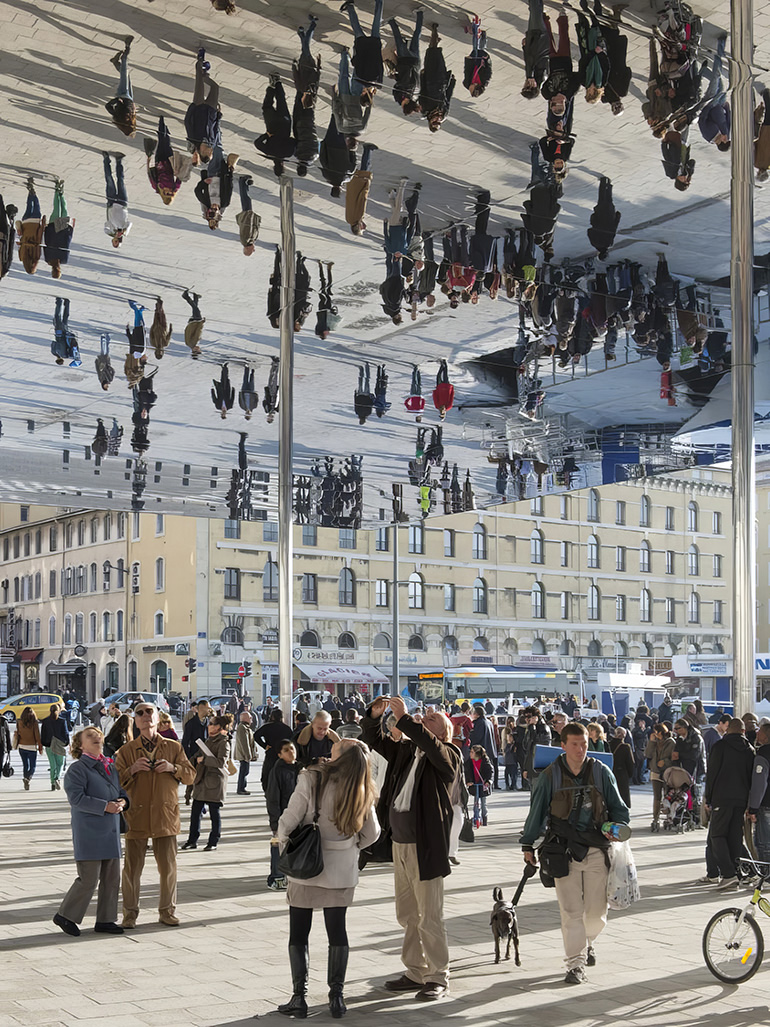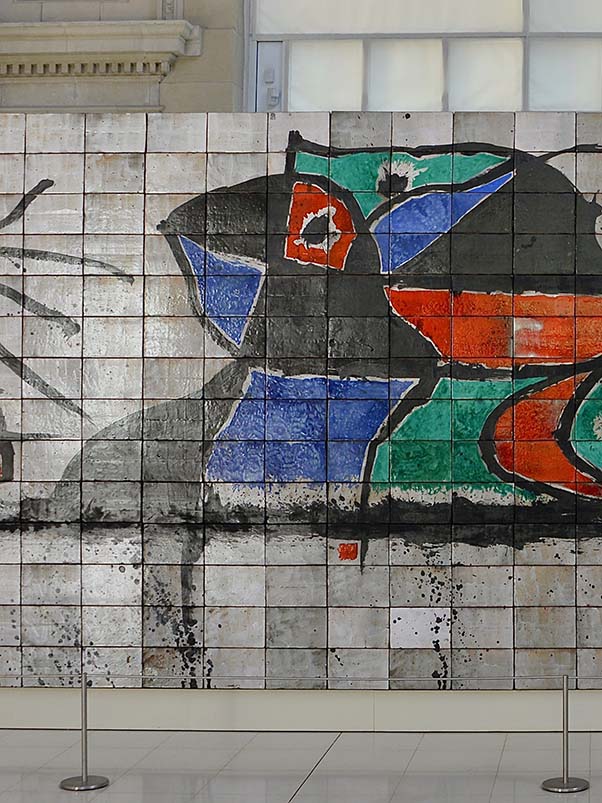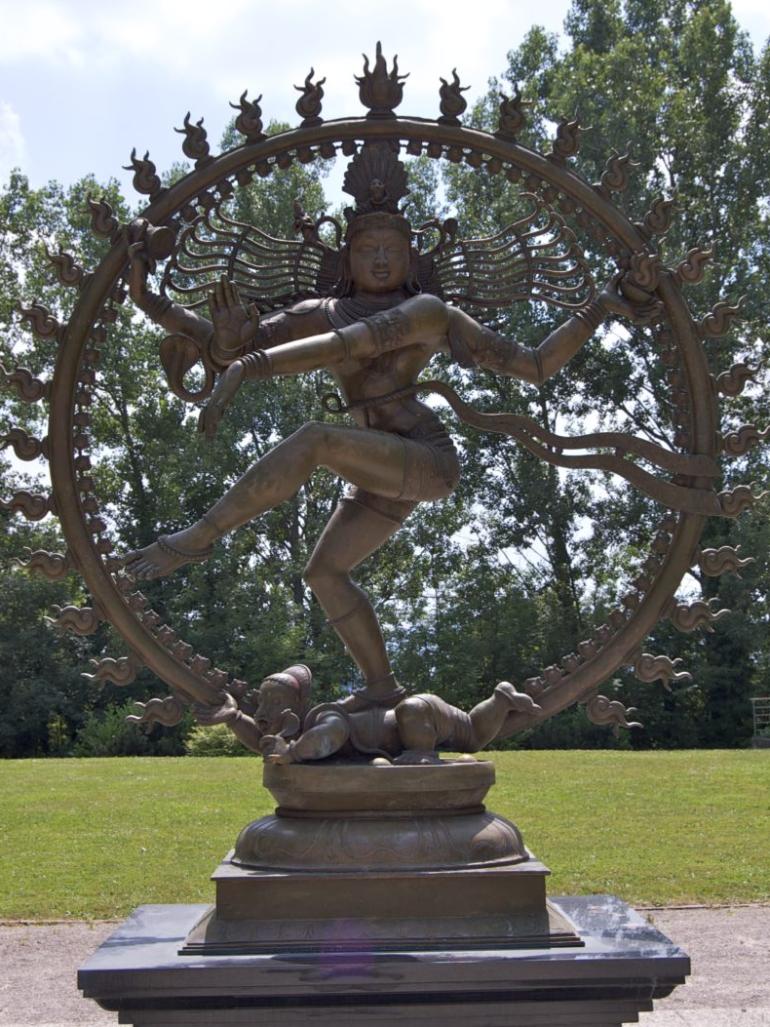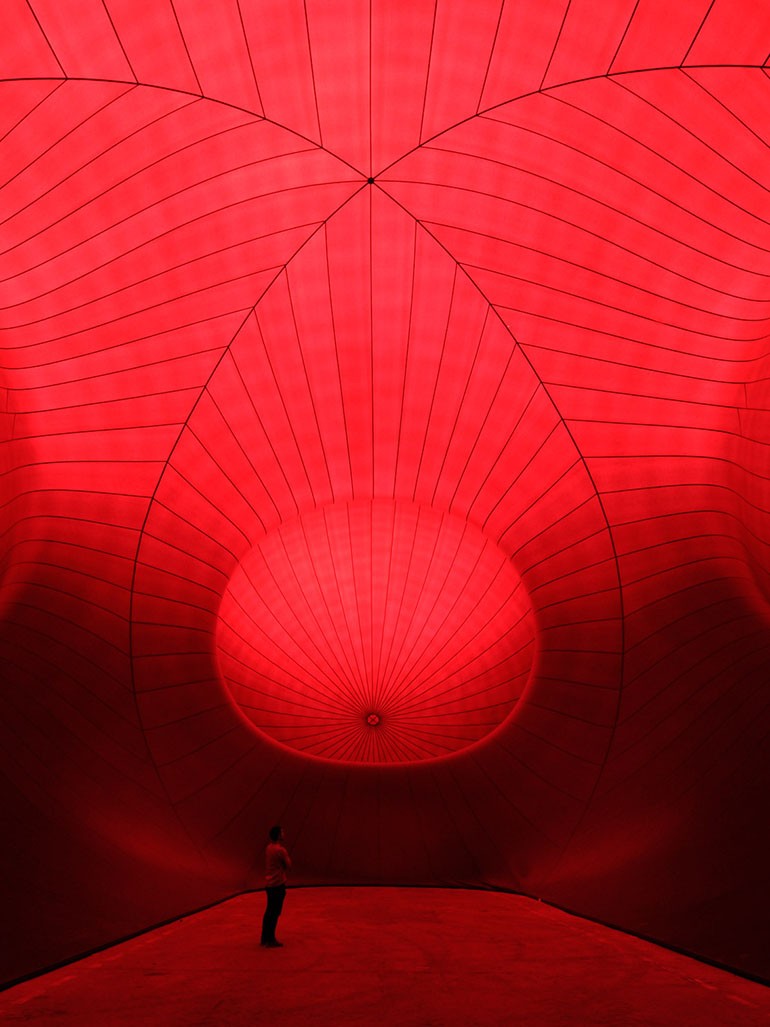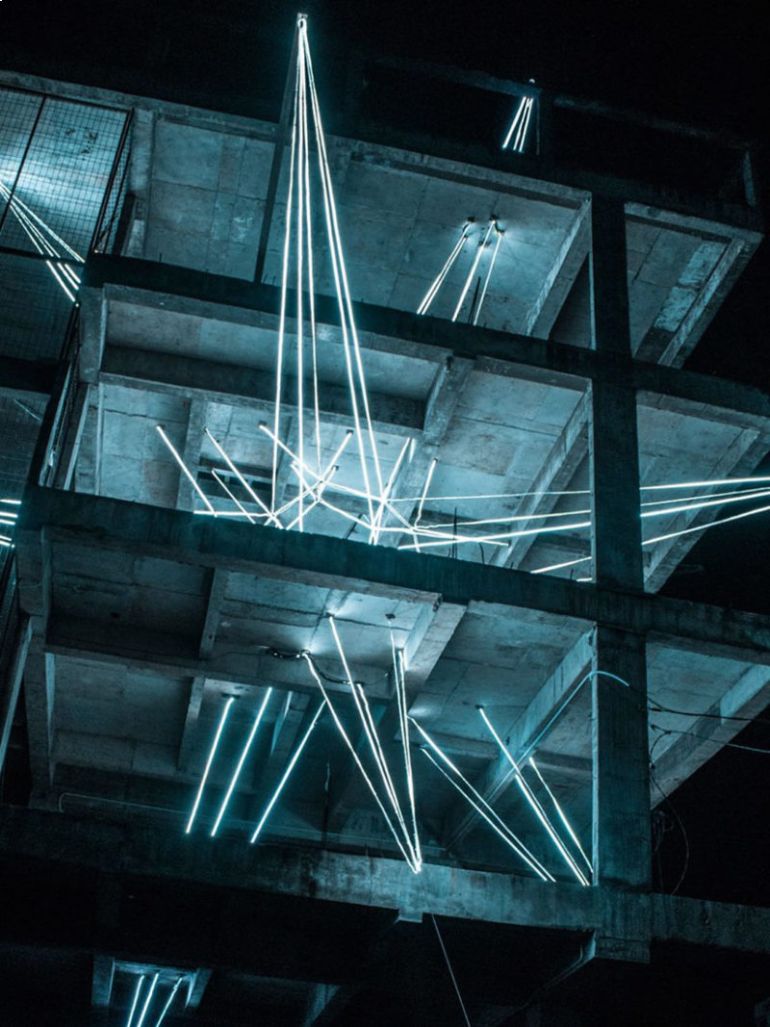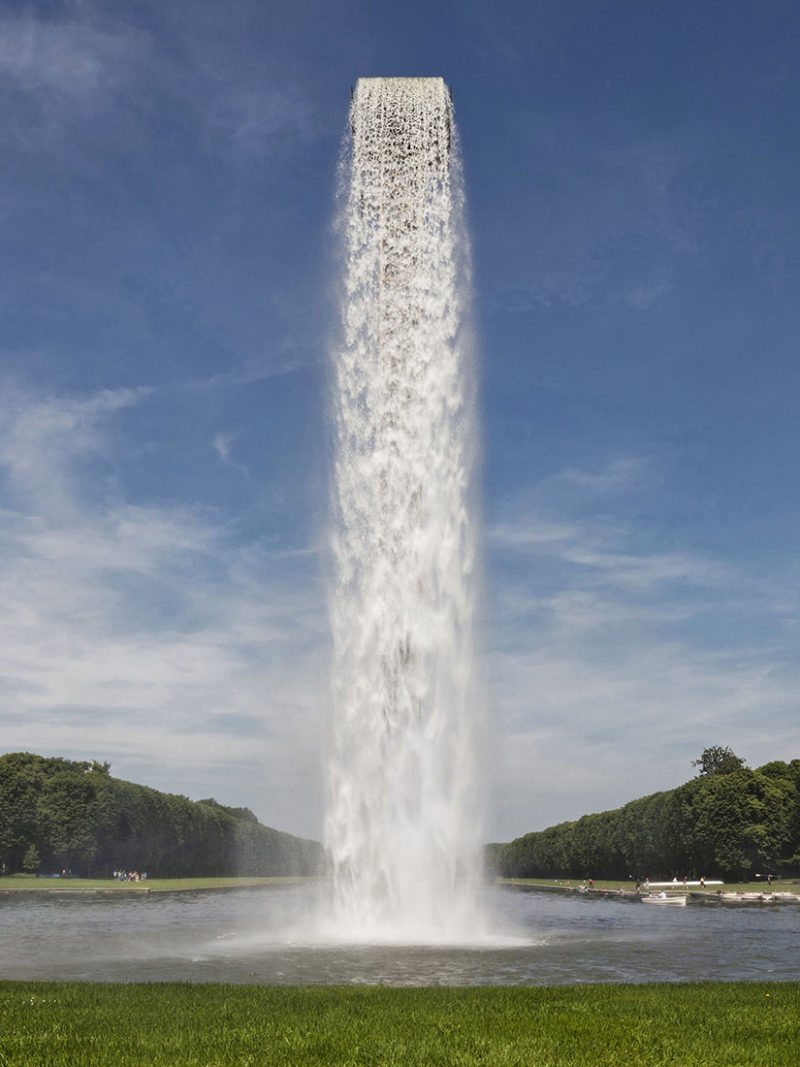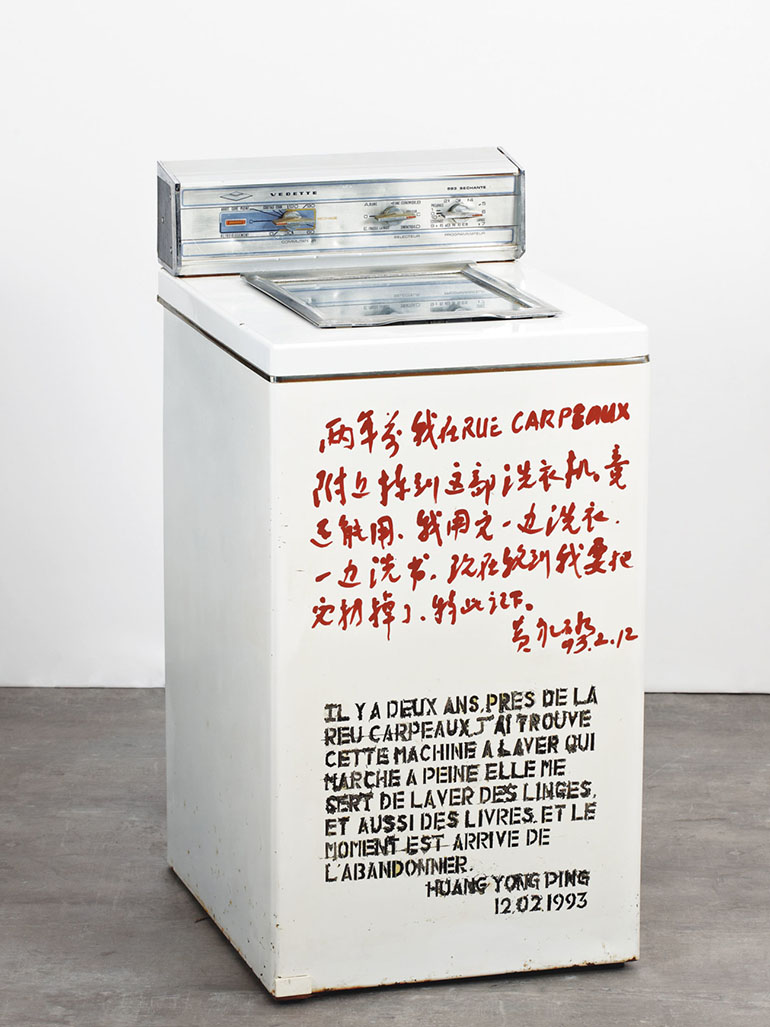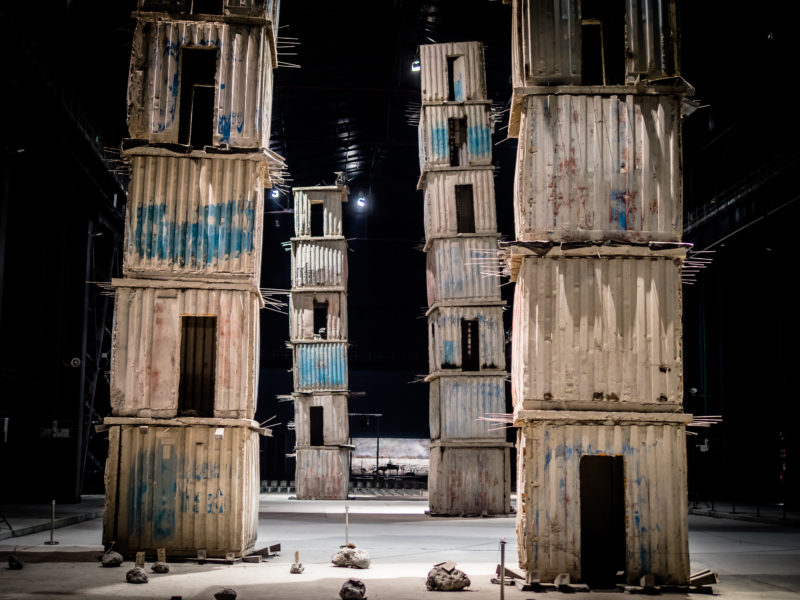
Anselm Kiefer’s abandoned 200-acre studio, Barjac, France
German artist Anselm Kiefer has long maintained a studio at Barjac in southern France, where he assembled his large sculptures and painted some of his dark, disturbing canvases.
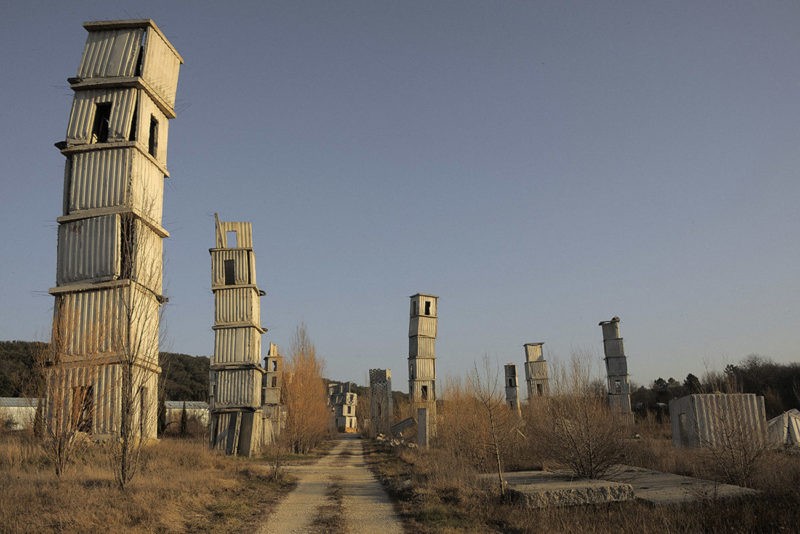
Now he has abandoned the site, with the wish that it be allowed to “revert to nature.” People exploring the site have been struck by these towers, made of concrete slabs held rather tenuously together with steel cables and iron bars.
Location of Kiefer’s former studio in Barjac, France
The Seven Heavenly Palaces installed in Milan
The Seven Heavenly Palaces was a site-specific installation, created for HangarBicocca in Milan, Italy, in 2004. This installation turned out to be one of Anselm Kiefer’s most important works today.
Commissioned originally in 2004 as a temporary piece, The Seven Heavenly Palaces was transformed into a permanent installation to the delight of many Italians and art lovers. As soon as it was turned into a permanent fixture, the installation immediately revealed itself to become an irreplaceable component of Milan’s collective imagination.
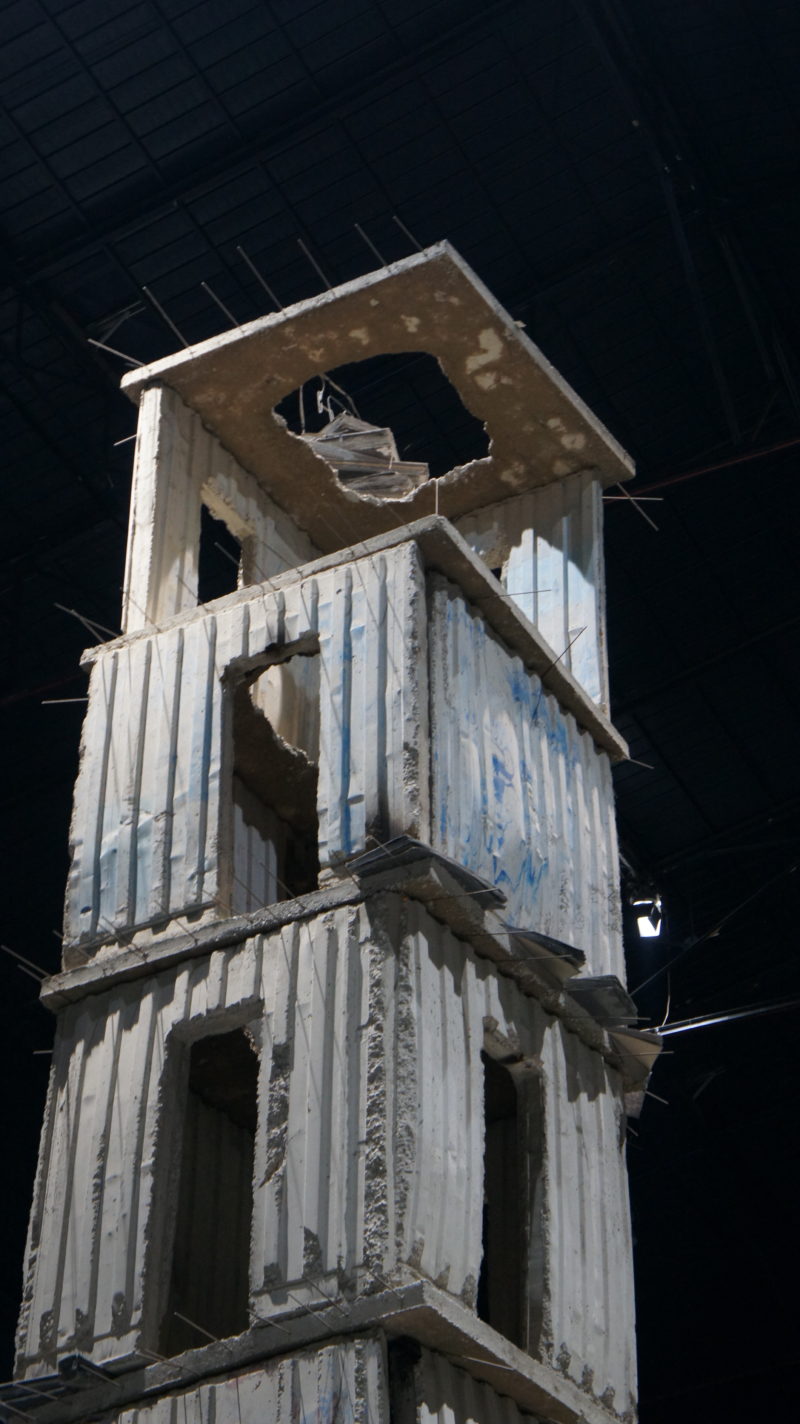
The seven towers, each weighing 90 tons and rising to heights of between 13 and 19 meters, were created from reinforced concrete using the angular construction modules of shipping containers.
Kiefer inserted lead books and wedged them between the various levels of each tower which, compressing beneath the weight of the concrete, further guarantee the static nature of the structure.
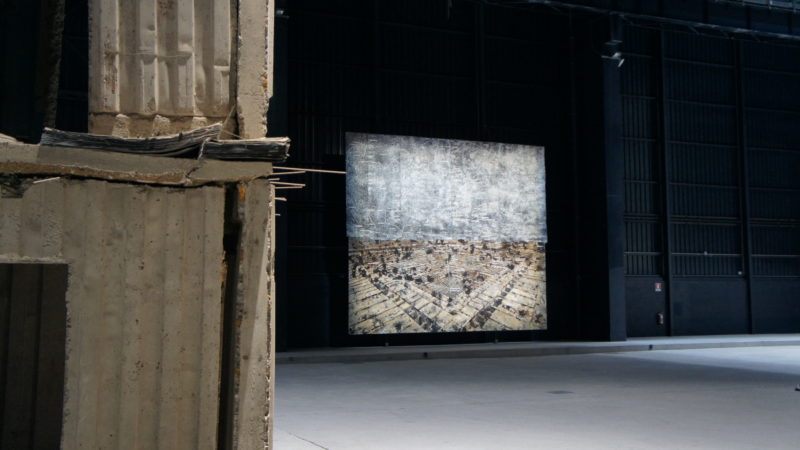
The fake ceilings inside often penetrate like meteorites or bomb hits. The aesthetics of the towers are those of horror than of redeeming freedom from the constraints and sufferings of the earthly. And yet, the artist calls them Heavenly Palaces.
Indeed, the bleakness of this installation, which is the greatest in its dimensions and which contemporary art has produced so far, is, according to some critics, more powerful than Richard Serras’ huge spiraling steel sheets, the Torqued Ellipses1.
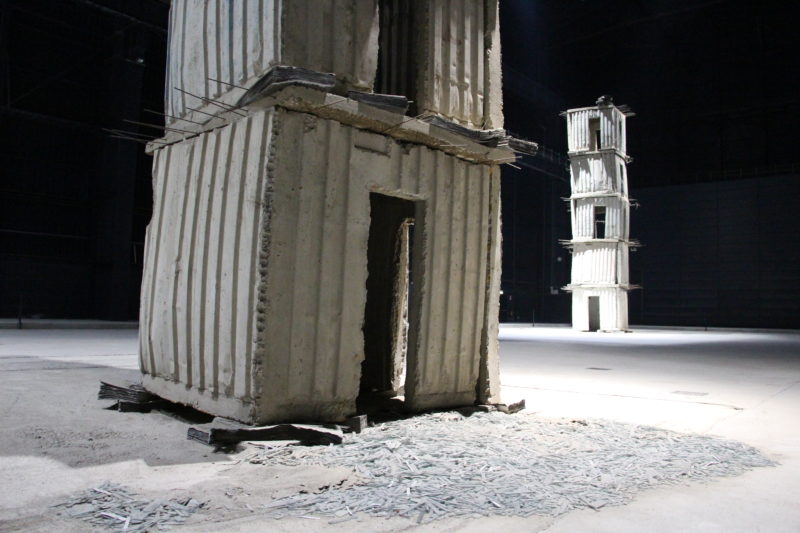
It is the bleakness of a landscape of ruins, in which time and history come to a standstill are brought and lifted. The effect transcends the raw building material and the ruins of the tower structures.
The Seven Towers installation carries several meanings. One arises from the reference to the urban landscape – as Milan is the background (the old bell towers of the city’s iconic church buildings such as Gio Ponti’s Pirelli building, one of the first high-rise buildings of Italian modernism).
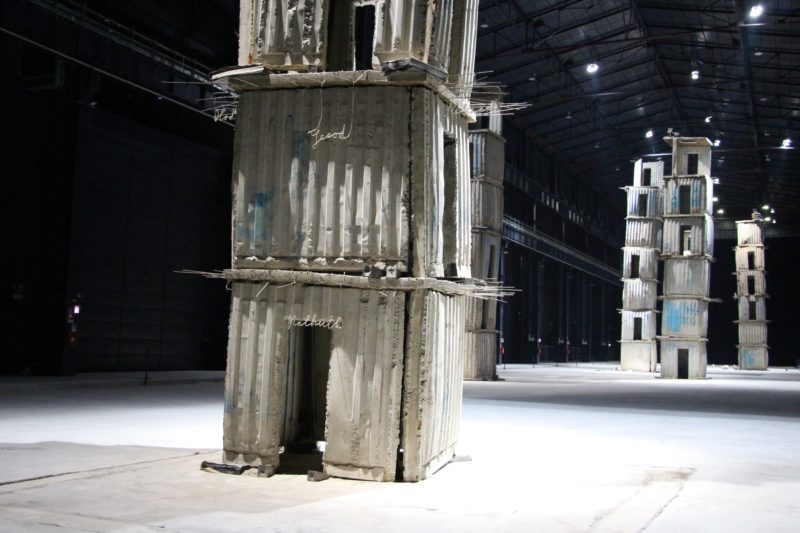
But this reference does not signify the triumphs of older and newer architecture in the city. Instead, the precariously sloping seven towers are Kiefer’s preemptive reminder of the inevitable decay of every building.
The ceilings between the floors, which are forcibly perforated inside the tower, could be translated as a trace of this movement in the opposite direction. Kiefer also created the towers to symbolize the mystical experience of ascension through the seven levels of human spirituality.
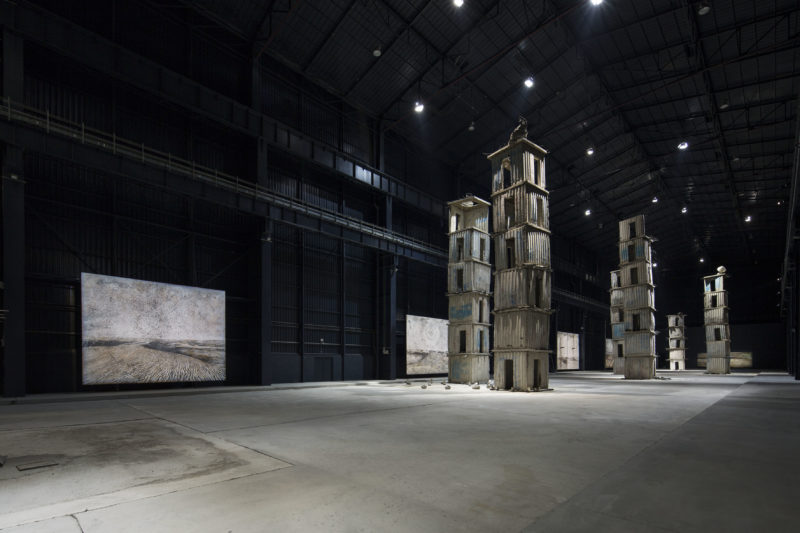
How the work developed from 2004 to 2015
In September 2015, Pirelli HangarBicocca unveiled Anselm Kiefer’s up-to-date installation. The display was an expansion of the original Seven Heavenly Palaces.
Over the past few years, the installation underwent a series of changes that obviously altered its original orientation, use, likability and flooring. However, in 2015, five new components were added under Vicente Todolí’s guidance.
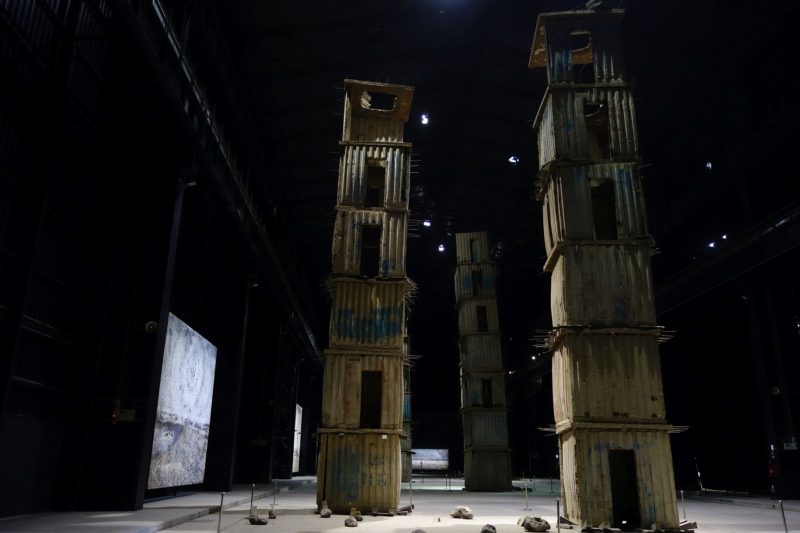
Alongside the seven towers, five large-format paintings made between 2009 and 2013 were added to the expanded installation titled the Seven Heavenly Palaces. The five large paintings on display helped to significantly give new meaning to Anselm Kiefer’s work of art.
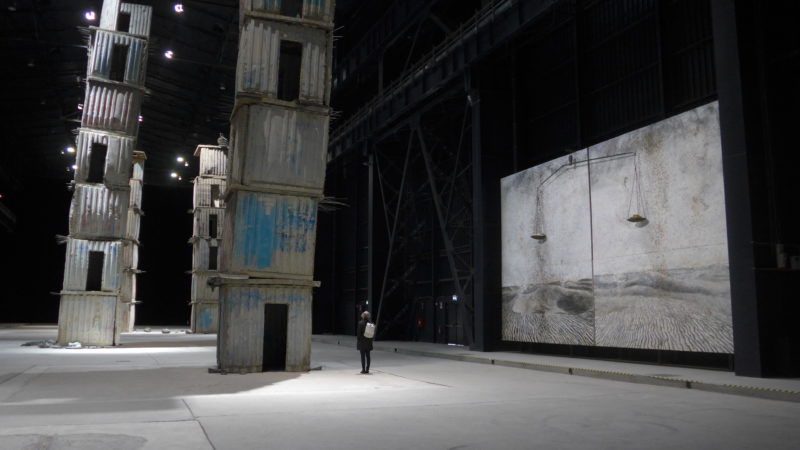
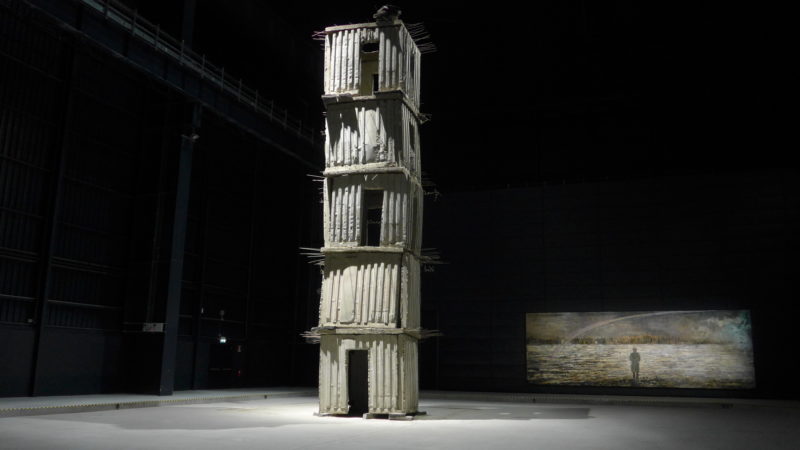
The five added paintings
The five paintings that make up the new collection include Jaipur, 2009, two pieces named cette obscure clarté qui tombe des étoiles, 2011, Alchemie, 2012, as well as Die Deutsche Heilslinie, 2012-2013.
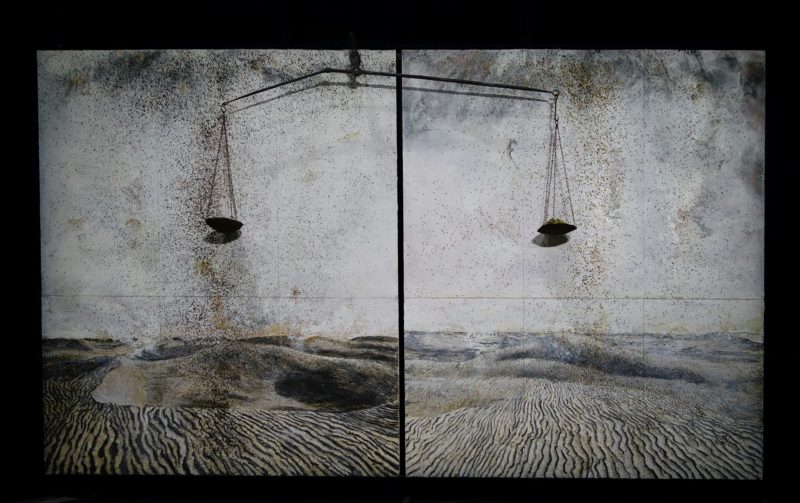
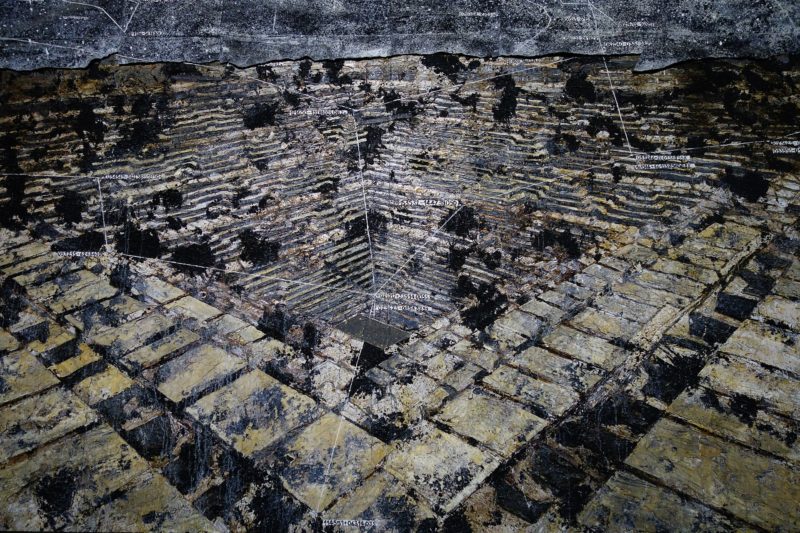
Kiefer created these new but complementary works that refer to some of the themes already present in The Seven Heavenly Palaces such as the architectural creations of the past observed as man’s effort to ascend to the divine, with each of the constellations signified using astronomical numbering.
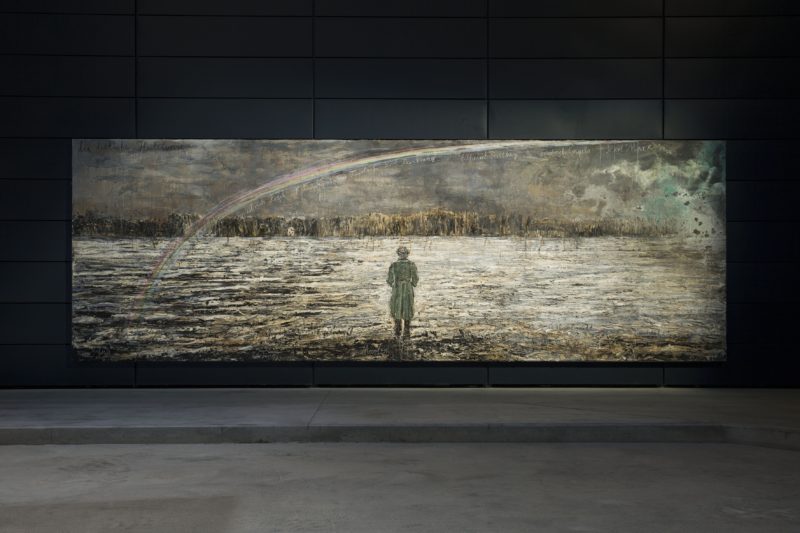
The five paintings added to the collection also help enhance several considerations that are key to Anselm Kiefer’s poetic vision, including man’s relationship with nature and orientations to the history of ideas and Western viewpoints.



About Anselm Kiefer
Anselm Kiefer was born in 1945 in a small town known as Donaueschingen in Germany. Anselm’s first-ever exhibition was held in 1969 at the Kunstverein in Hannover, but he has since exhibited his works in some of the leading global art spaces.
The international institutions have put on solo and retrospective exhibitions of his work include the Philadelphia Museum of Art, The Hirshhorn Museum and Sculpture Garden, the San Francisco Museum of Modern Art, MOCA, Los Angeles, and MoMA, New York and many more.
Jericho at the Royal Academy, London, 2006
Anselm Kiefer’ create Jericho for the Royal Academy’s Annenberg Courtyard. It comprises two towers standing 14 and 16.5 meters tall. Kiefer had determined their height and situation to best work with the classical architecture of the Academy’s courtyard.
Jericho is constructed from reinforced concrete components arranged in a series of tiers or floors. Some of the walls consist of doorways, while floor pieces have a rough open center that lets the viewer look up from the base unit to the sky through a series of levels.
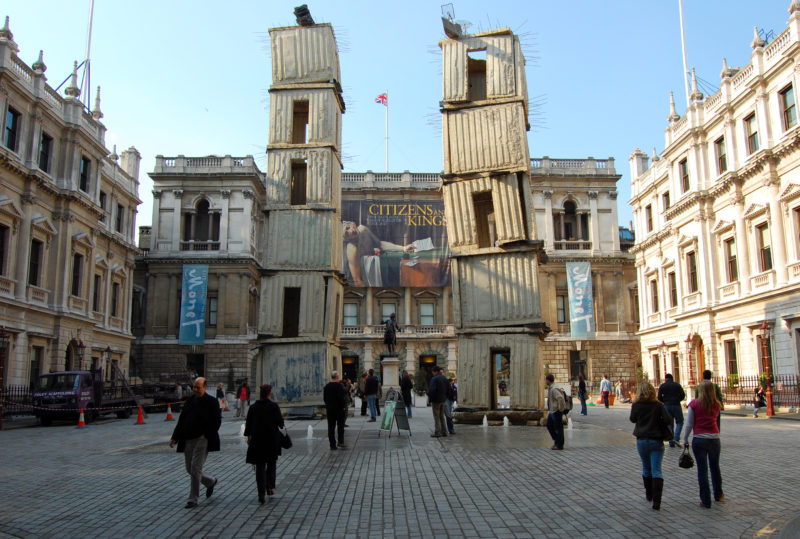
Reinforcing bars visibly protrude from each piece accentuating the towers’ rough-hewn texture. Lead books, a common element within Kiefer’s work’ are used to prop up corners of some of the wall pieces, thereby giving the towers the appearance of being disjointed and precarious.
The two towers resemble structures seen in concentration camps, perhaps to evoke the memories of World War II internment camps designed to target specific ethnicities, himself being a German-Jewish.
The structures, having been made of reinforced concrete, should look solid and constant, but Jericho towers appear weak and look as if they have been just stacked together haphazardly.
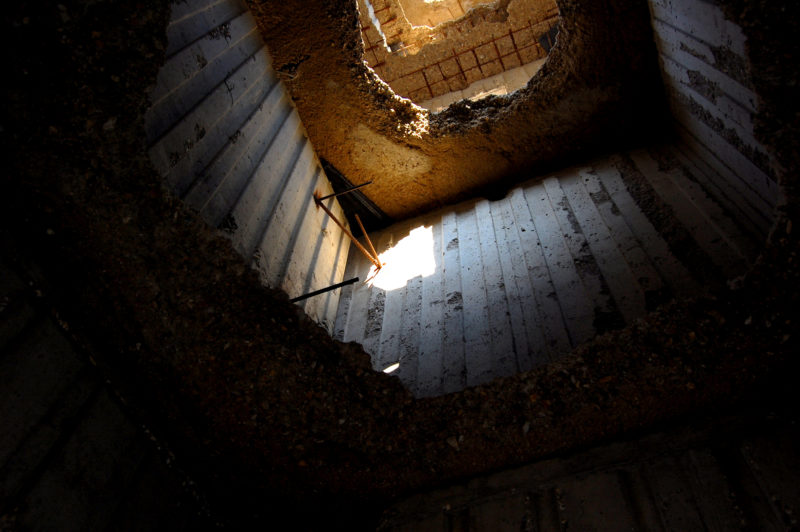
Tower at the Grand Palais, Paris, 2007
For the Towers at Grand Palais, Kiefer brought three concrete towers that usually stand on his property in Barjac, France. The installation, in turn, had the desired effect of occupying the palace, both physically and visually.
The surrounding, free-standing towers are composed of pre-cast, bunker-like cement houses. One is set upon the other in a none-too-stable pile, here sprouting steel sunflowers, and there purposely tipped over and smashed on the floor in an obvious reference to the ruins of war-torn Germany or the wreckage of 9/11.
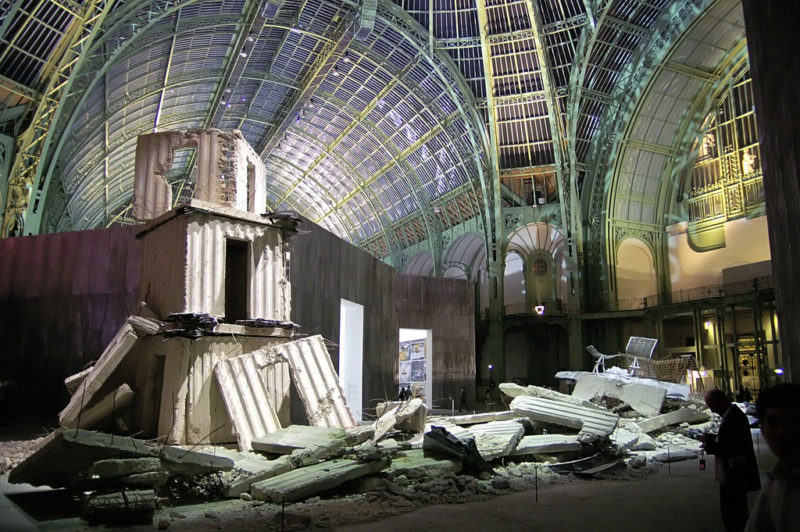
The concrete rubble, bristling with twisted iron rods, bent antennas, and twisted steel mesh, also features giant sculpted books, their pages made from lead sheets, their forms bent and folded as though from the impact.
His show’s title is itself a reference to the Grand Palais and its glass roof. Kiefer told the New York Times2:
We are beneath the sky, below the firmament.
The towers fill the space with the visual and intellectual force, much of which is inspired by literature, particularly the poetry of the Romanian Paul Celan and the Austrian Ingeborg Bachmann, the Bible, and cabalistic writings.
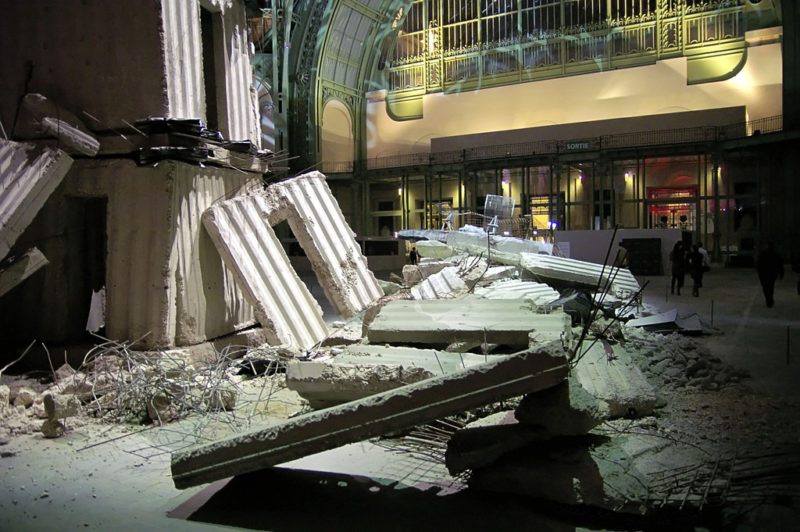
Explore nearby (Eschaton foundation, Barjac, France)
 Louise Bourgeois' MamanChateau La Coste, France114 km away
Louise Bourgeois' MamanChateau La Coste, France114 km away Norman Foster’s Marseille Mirror RoofMarseille, France140 km away
Norman Foster’s Marseille Mirror RoofMarseille, France140 km away Joan Miró's largest artworksFondation Maeght, Saint-Paul de Vence, France231 km away
Joan Miró's largest artworksFondation Maeght, Saint-Paul de Vence, France231 km away Shiva the Destroyer statueCERN, Meyrin, Switzerland250 km away
Shiva the Destroyer statueCERN, Meyrin, Switzerland250 km away

